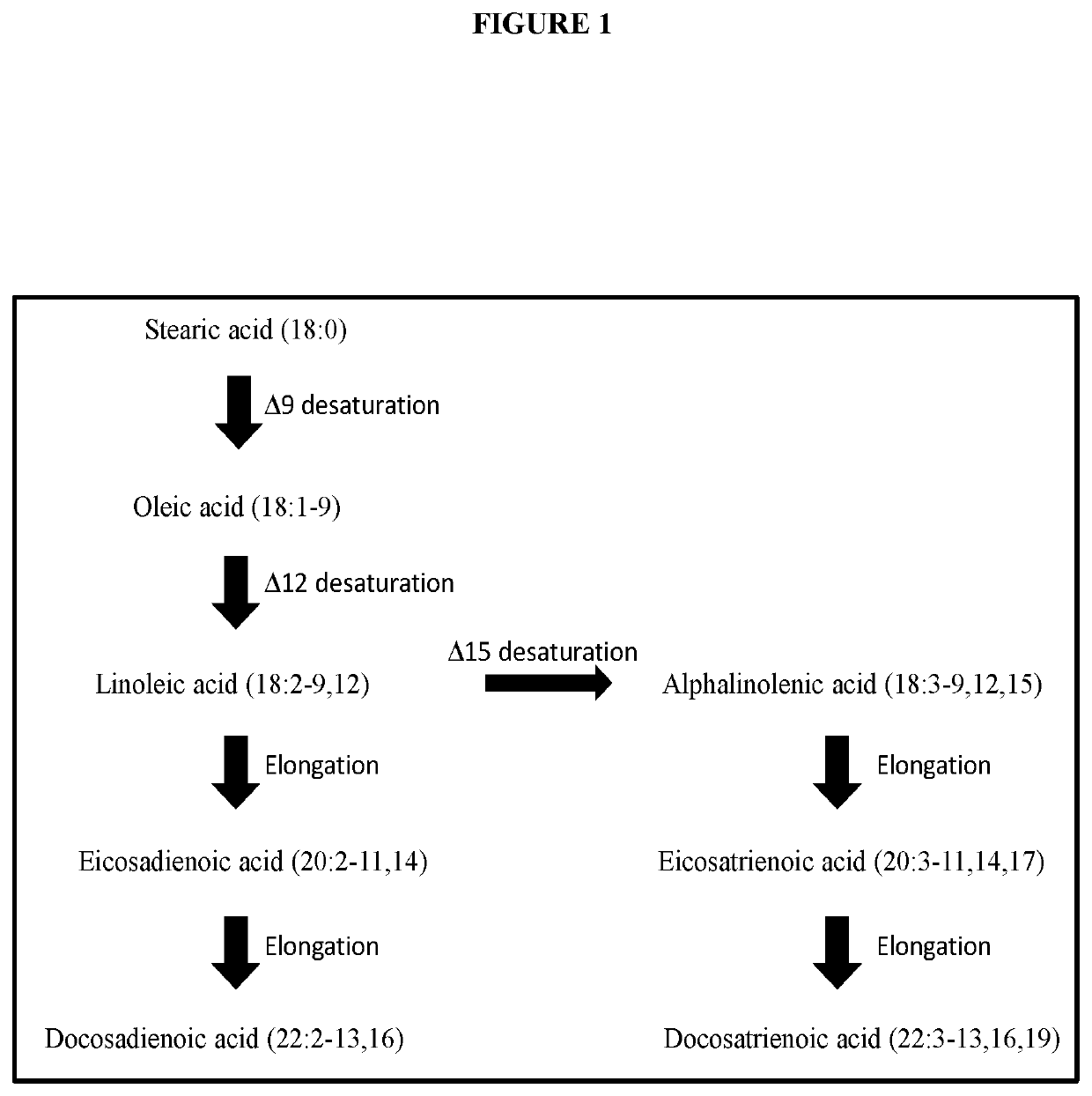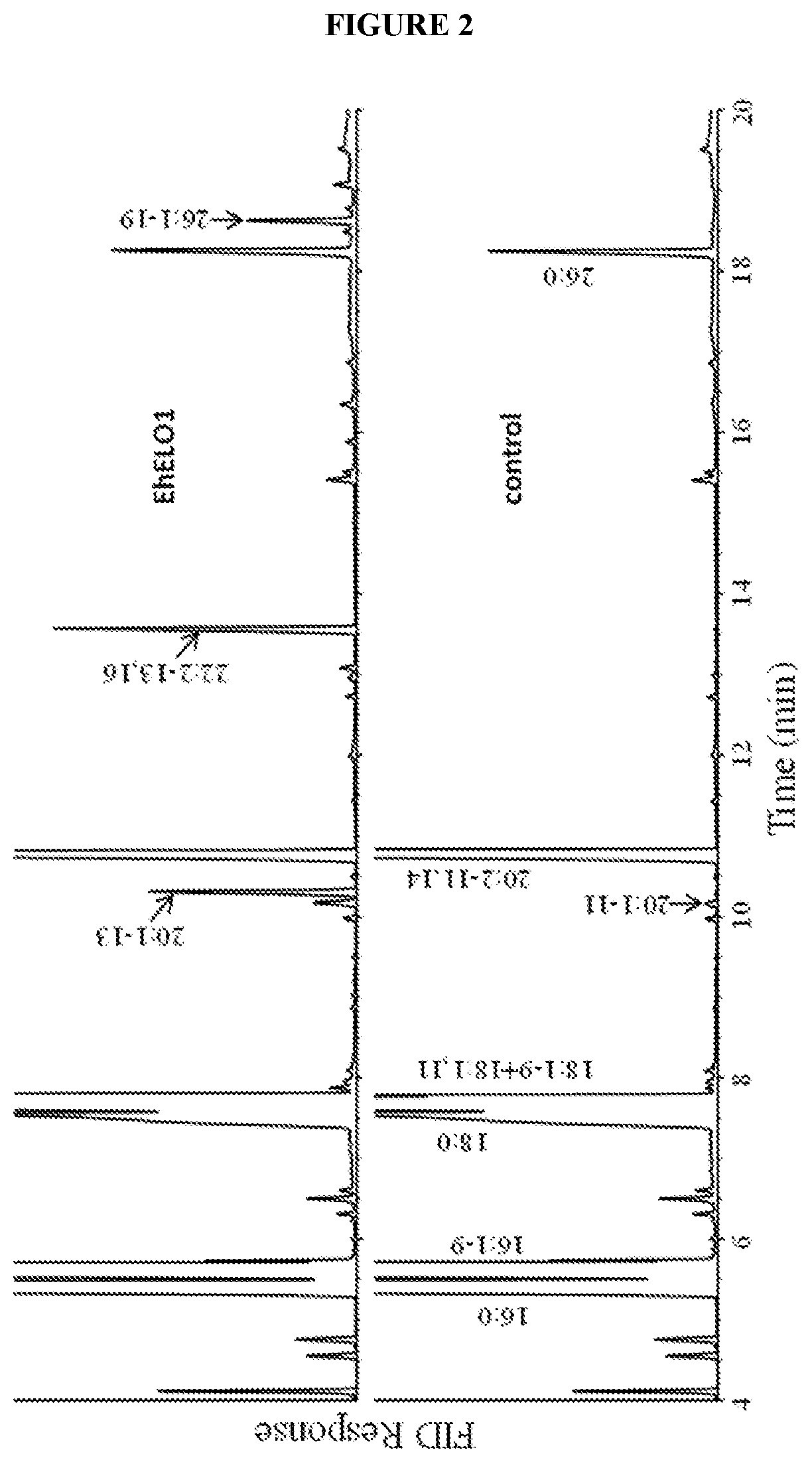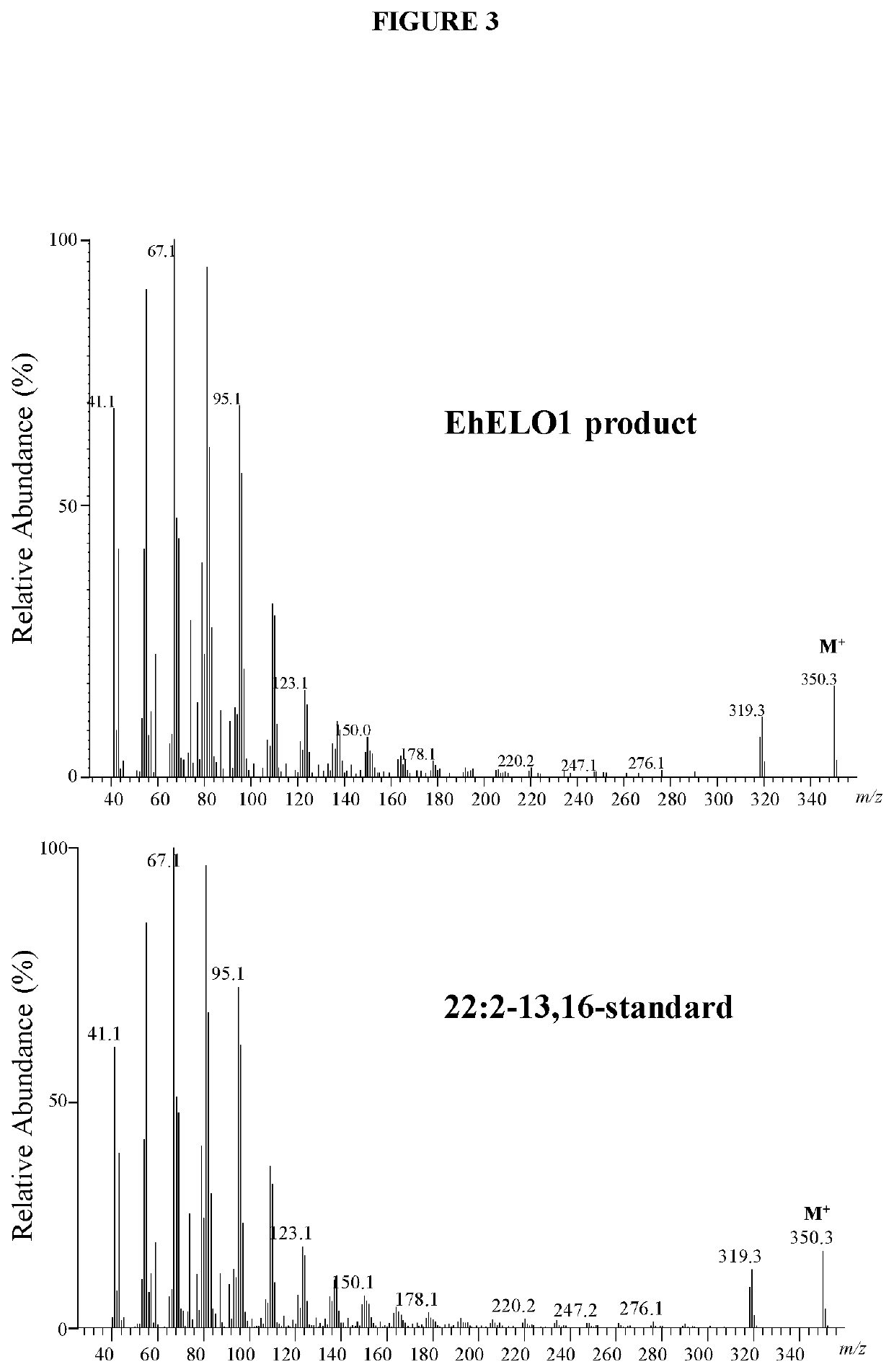Winter aconite fatty acid elongase and uses thereof in the production of fatty acids
a technology of aconite and fatty acid, which is applied in the field of fatty acids, can solve the problems of inability to readily find rich sources of fatty acids known in nature, and the inability of wild plant species to produce fatty acids for agricultural production,
- Summary
- Abstract
- Description
- Claims
- Application Information
AI Technical Summary
Problems solved by technology
Method used
Image
Examples
example 3
tion and Sequencing
[0126]The high quantity of DDA fatty acid (22:2-13cis,16cis; up to 59.7%) found in developing seeds of E. hyemalis suggested that the developing seeds from E. hyemalis may be a good resource for identifying gene(s) involved in the biosynthesis of DDA. In order to identify candidate gene(s), total RNA from about 20 developing seeds (2-3 weeks after flowering) was first isolated by TRIzol reagent (Invitrogen) prior to purifying by the RNeasy Plant Mini column. Genomic DNA contamination was eliminated by on-column DNaseI digestion step with RNase-free DNase set (Qiagen). The quality of total RNA was determined using both Bioanalyzer and gel electroporesis. The RNA integrity number (RIN) of this sample by Bioanalyzer was 9.5, indicating a good quality of the RNA sample. The sample was then sent for RNA-seq Illumina sequencing analysis.
example 4
atic Analysis of ESTs to Identify Gene Involved in the Synthesis and Assembly of DDA, Sequencing and Cloning of the EhELO1 cDNA
[0127]The RNA transcripts in developing seeds were sequenced using the Illumina RNA sequencing facility. The bioinformatics analysis of sequences showed there were two short contigs found in a gene which was homologous to ELO-like elongases. This gene was given the designation EhELO1. The first contig contained 563 bps at the 5′ end of the cDNA including the start codon, while the second contained 461 bps located at 3′ end of the cDNA including the stop codon. There was a 376 bps overlapped region. This sequence information from the two contigs was then used to obtain the full length sequence of the EhELO1 cDNA. PCR amplification of the full length EhELO1 cDNA was performed using Q5 polymerase with two specific primers (DM719: 5′TCTAGAATGGAGTCCATTTCTGCTAG-3′ (SEQ ID NO: 1) and DM720: 5′-TCTAGATTAAACCAGCTTCTTATCCTTG-3′ (SEQ ID NO: 2)) designed from the sequen...
example 6
d Analysis of Transformed Yeast Cells
[0132]For fatty acid analysis of yeast cells, the cells were pelleted by centrifugation, washed once with 0.1% tergitol and once with water. The fatty acids were converted to their methyl esters with 3 N methanolic HCl at 80° C. for 1 hour. After addition of 1 mL of water, the sample was extracted twice with 2 mL of hexane. The hexane extract was combined and dried under N2, and resuspended in 200 μL of hexane. The fatty acid composition was analyzed on a Hewlett-Packard 5890A gas chromatograph equipped with a DB-23 column (30-m×0.25-mm×0.25-μm). The temperature program was isothermal 160° C. for 1 min, gradient 4° C. / min to 240° C., and then isothermal at 240° C. for 10 min. For GC / MS analysis of docosadienoic acid methyl ester, the sample was dried under a stream of nitrogen and the residue was dissolved in 100 μL of hexane. The analysis was accomplished using an Agilent 5973 mass selective detector coupled to an Agilent 6890N gas chromatograph...
PUM
| Property | Measurement | Unit |
|---|---|---|
| thermal melting point | aaaaa | aaaaa |
| thickness | aaaaa | aaaaa |
| temperature | aaaaa | aaaaa |
Abstract
Description
Claims
Application Information
 Login to View More
Login to View More - R&D
- Intellectual Property
- Life Sciences
- Materials
- Tech Scout
- Unparalleled Data Quality
- Higher Quality Content
- 60% Fewer Hallucinations
Browse by: Latest US Patents, China's latest patents, Technical Efficacy Thesaurus, Application Domain, Technology Topic, Popular Technical Reports.
© 2025 PatSnap. All rights reserved.Legal|Privacy policy|Modern Slavery Act Transparency Statement|Sitemap|About US| Contact US: help@patsnap.com



